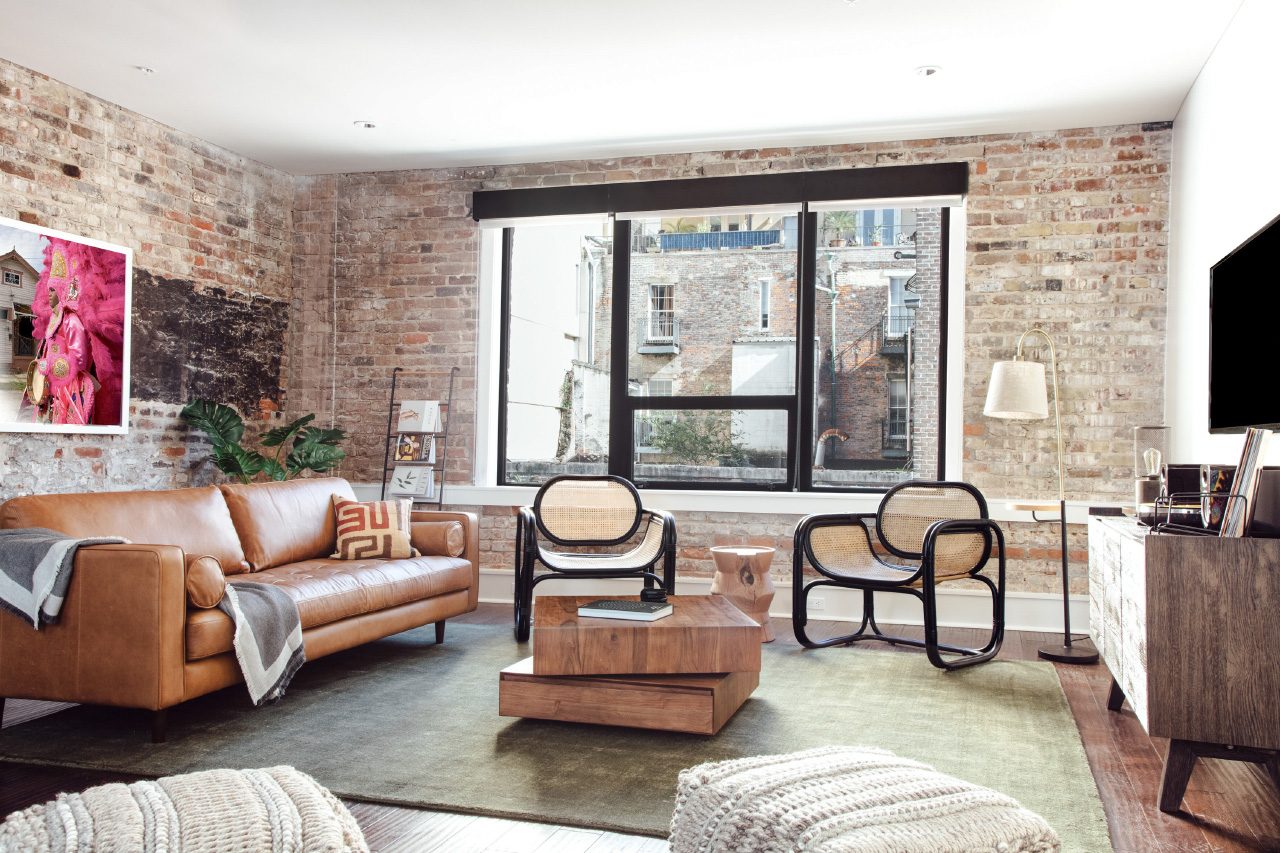Reconfiguring residential units into hospitality spaces isn’t exactly what home sharing service Airbnb is known for, but it certainly aligns with their mission. That might explain why the company was the lead investor in a funding round last month that netted $160 million for the startup Lyric.
Lyric, founded in 2014, operates in 13 cities across the U.S. After leasing units in apartment buildings, the company renovates and restyles them for travelers with a suite of amenities. Lyric finely balances between styling its units as hospitality-minded spaces and livable apartments; it recognizes that while some travelers may use their rentals as “crash pads,” others might stay for a longer term and want to explore the culture of their host city.
AN Interior recently sat down with Nicole Bernstein, senior director of experience design, and Ravi Hampole, vice president of brand and design, to discuss the challenges, advantages, and design inspiration that drive Lyric.
(The following interview has been condensed for clarity.)
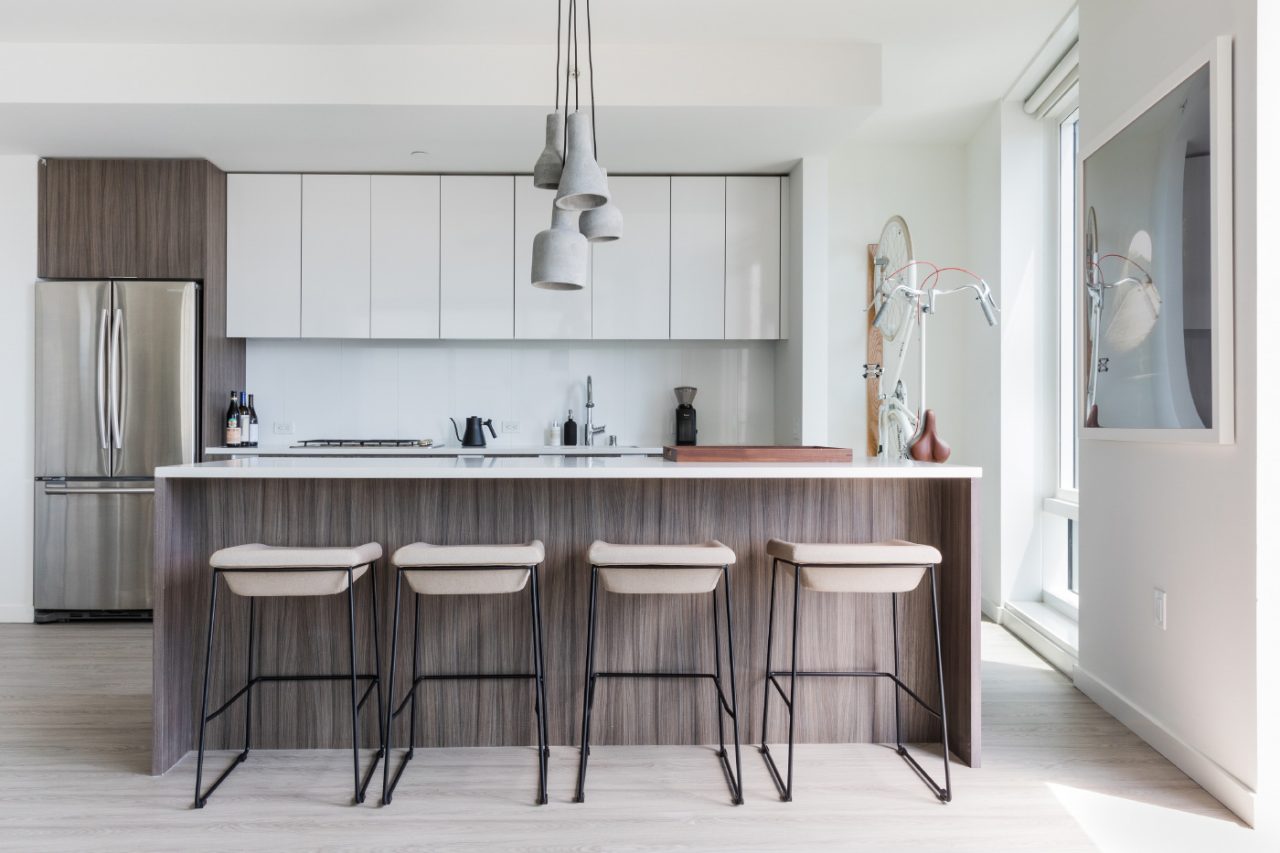
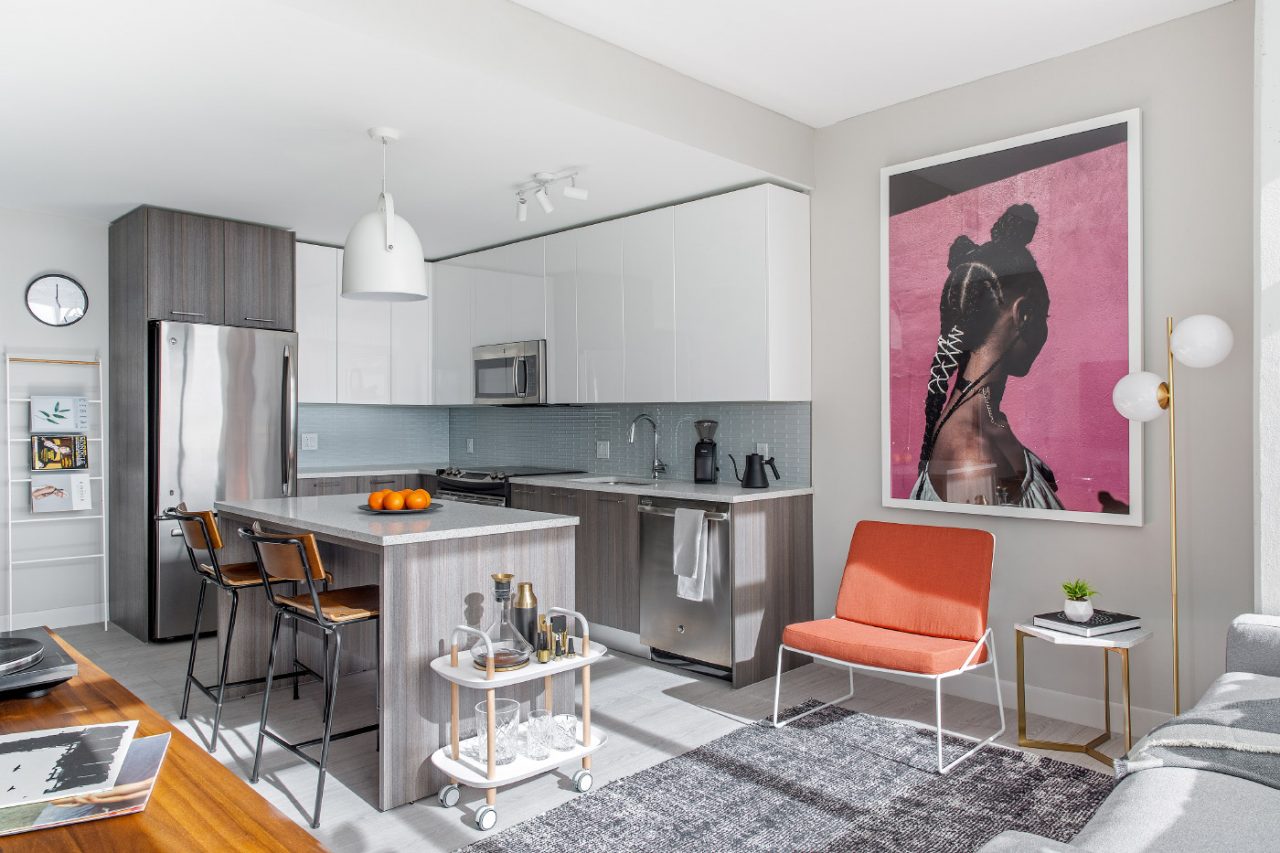
AN Interior: What are the challenges and advantages in what Lyric does, taking spaces that already exist for apartment buildings or homes and turning them into higher traffic hospitality units?
Ravi Hampole: The challenge is getting that hospitality experience across, and that feeling that you’re being taken care of and supported. When we started it was four or five units inside a residential building that was not set up as a hotel. So, you’ve had to think of operationally how to make that suited for somebody coming in from out of town like 4 nights to 30 nights, to sometimes a year. It’s how you actually make someone feel like they’re part of that space and that neighborhood, and that they’re accessing the neighborhood and actually feeling like a home to them.
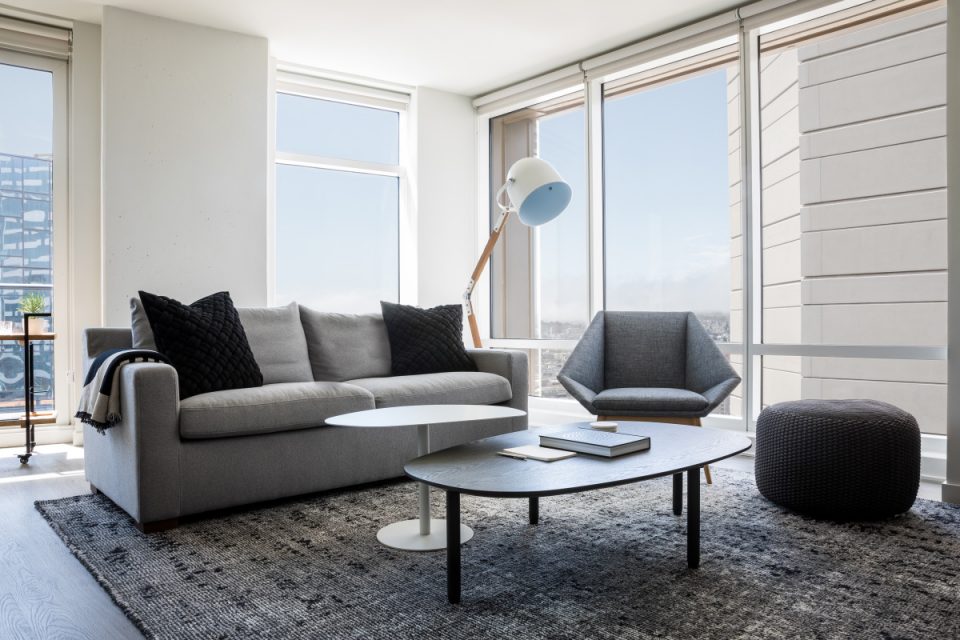
How do we do that? One is to bring a lot of the local narrative into this space. The challenge is actually making someone feel like they’re in a neighborhood. So, we use local vinyl, custom wallpaper, and have a narrative around that. The signature chair also has a narrative around the local area. We do also the artwork, which is really key, so we get an artist, photographer usually, but an emerging artist is from the area, and give their narrative from a personal standpoint and also just from the city’s standpoint.
AN: Does Lyric have an overall in-house aesthetic that standardizes things across their spaces? How does Lyric balance using a kit-of-parts with the local vernacular?
RH: We absolutely have a catalog that we can pull from, but the way we look at a lot of those things are more the functional elements of the room. The table, chairs for dining, sleeper sofas, so those are pretty standardized. They’re all the things that you have to functionally use.
Philosophically, the idea is that we’re trying to create a network of spaces where you feel like you’re at home, so we want get this idea of consistency out there that is hotel-like. We want to be able to make sure that people feel that they trust it when they come in.
So, we created a whole sort of sleep experience that is very, very consistent. Same thing with dining tables, chairs, the TV experience is pretty much standardized.
For example, we’re in Miami, and we’re actually talking a little bit more about the narrative of immigration that happened in Miami, so we’re taking a more Cuban bend to it. Things like accessing a local bodega and snacks, also looking at the history of immigration, and the throws and the pillows that are there are also from that era.
Things like the sofa will be the same in Miami and in New Orleans, but all the other aspects of it that layer on to a bigger narrative about that city come into play through all those other pieces.
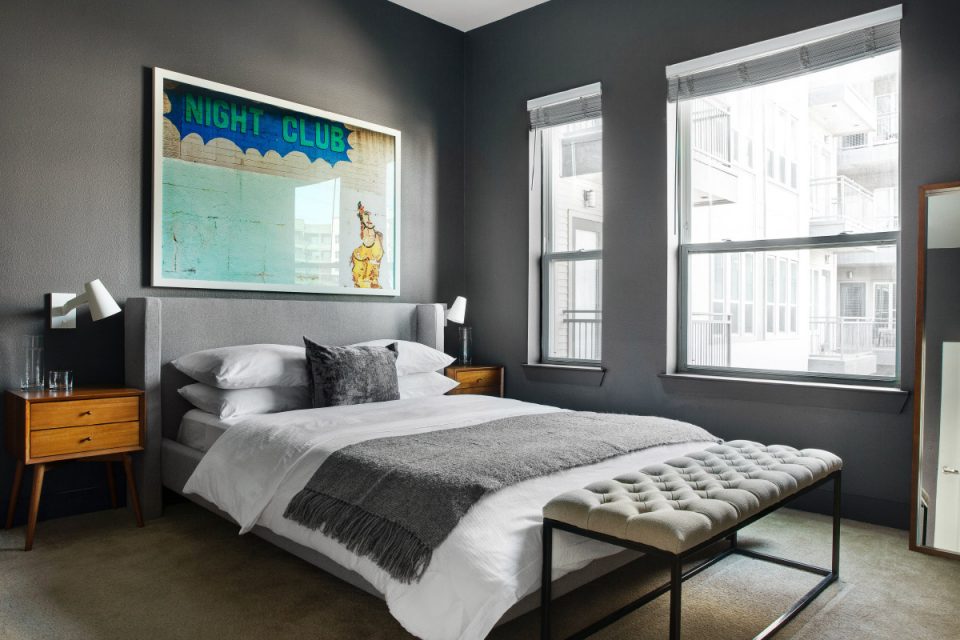
AN: How is the furniture sourced? Or is some of it designed in-house?
RH: I’ll be very honest, we were like, “Wow, it’s really expensive to source things.” And hotels it’s like a lot of it is usually custom made, but you’re talking about 400, 500 units and then you multiply that across thousands of hotels” you get your costs down pretty easily.
So we’re in a different position, and we’re moving to that level, but there are certain items that, from a cost standpoint, it’s ridiculous to spend like whatever we’re spending on the bar carts. We’ve able to reduce that cost down substantially but then also get a cart that we really like. We’re not beholden to a retailer who has only a certain amount of inventory and even if you go there in full order, you’re still stuck with that look.
We wanted to actually go in and design the bar carts, and make something that’s actually more efficient and effective for us and also looks better. So, we do bar carts, we do coffee tables, so that they’re multifunctional and actually you can work on them. The sleep experience is just a big, big thing for us, and we’re talking to a couple new partners about how we can make that sleep experience even better. The custom wallpaper, the custom bed that has lighting that’s built in, and it has plugs, USB, and also normal ports to charge your phone or whatever you want, multitask lighting, ambient lighting in the back, and then all on a metal frame so it’s all contract grade too. The other benefit is that we’re moving into contract grade that you won’t find from a lot of competitors that they’re not making contract grade stuff, so we actually care quite a bit about the quality.
Now we’re also moving into rugs, textiles, and then also workspaces.
If you think about a walk-closet, we don’t need a walk-closet. Right, there’s nobody that really needs a walk-in closet for a seven-to-ten-night stay. We’re starting to look at what square footage we use and how that changes the way we build our units. Reduce the square footage of the walk-in closet, move that into the living room, and then have a smaller kitchen space as well, because people don’t need 20 feet of kitchen.

AN: I’ve seen that travelers can stay up to 200 days in some circumstances.
Nicole Bernstein: Even more than that, right?
RH: I think we had our longest stay was like 316 or something nights.
NB: It’s effectively a lease.
RH: It really is, so I think that this a thing so people might not even know sometimes how long they’re going to be there. And so we have many cases of people staying 300 plus nights, and what they’re tending to do is stay the month, and then they’ll get another month and then another, because they actually don’t even know how long they’re going to be that city. There is no offering right now that one, people can search really easily, and then two, as an experience that they feel like they’re home. Corporate housing is a really depressing experience, and you always feel like you’re displaced. It’s really important to make people feel like they’re at home and they’re not displaced, they actually live in that space.
